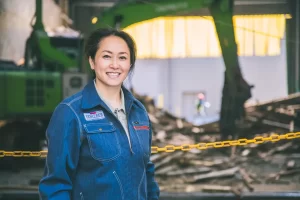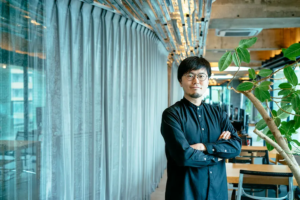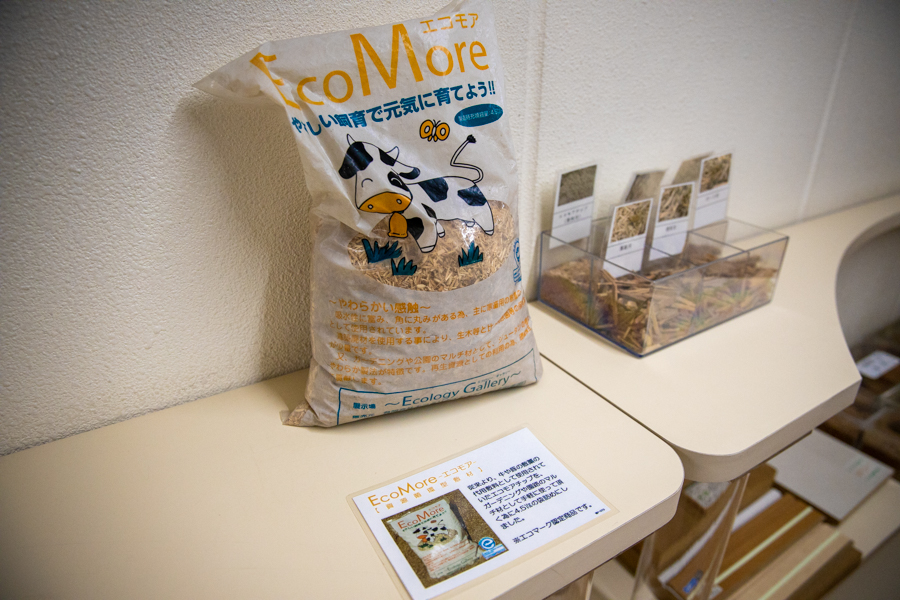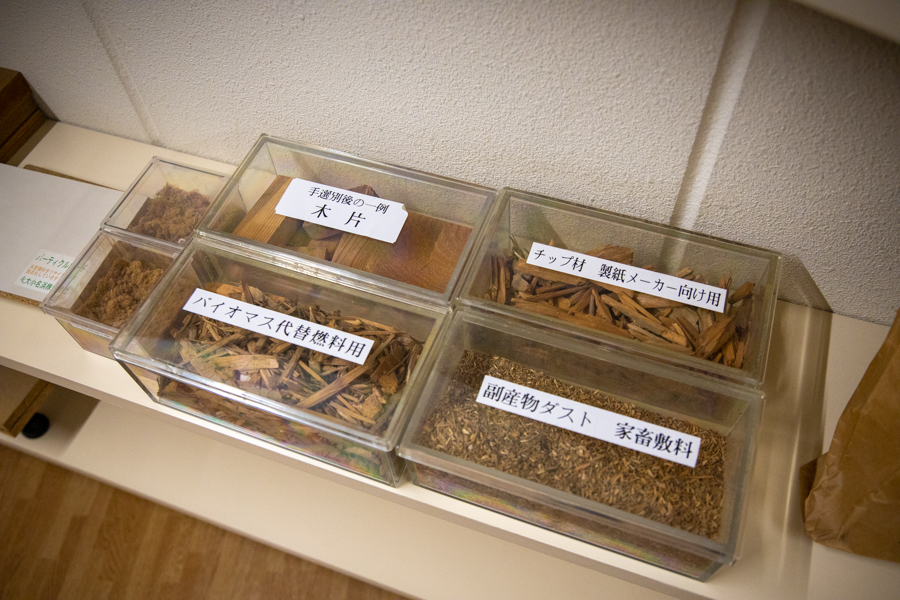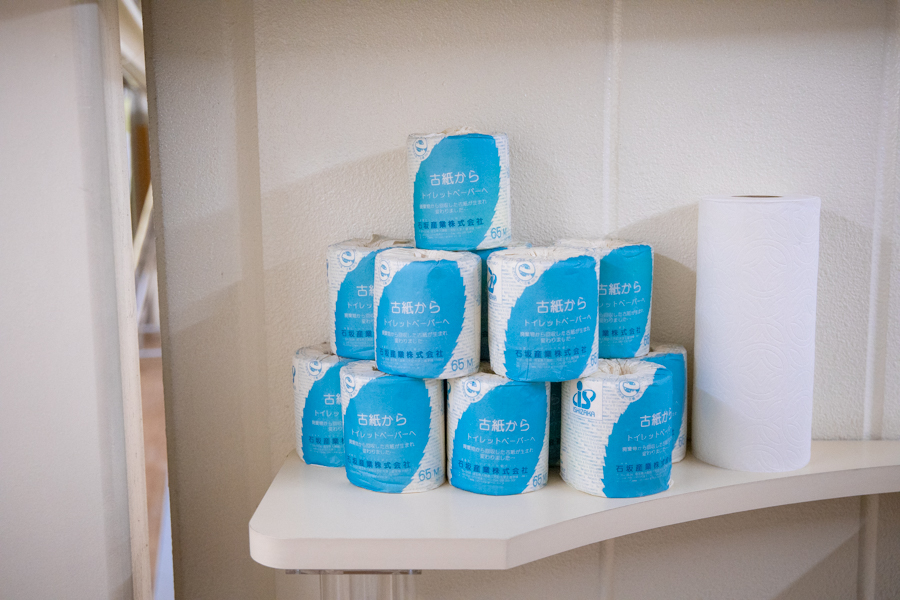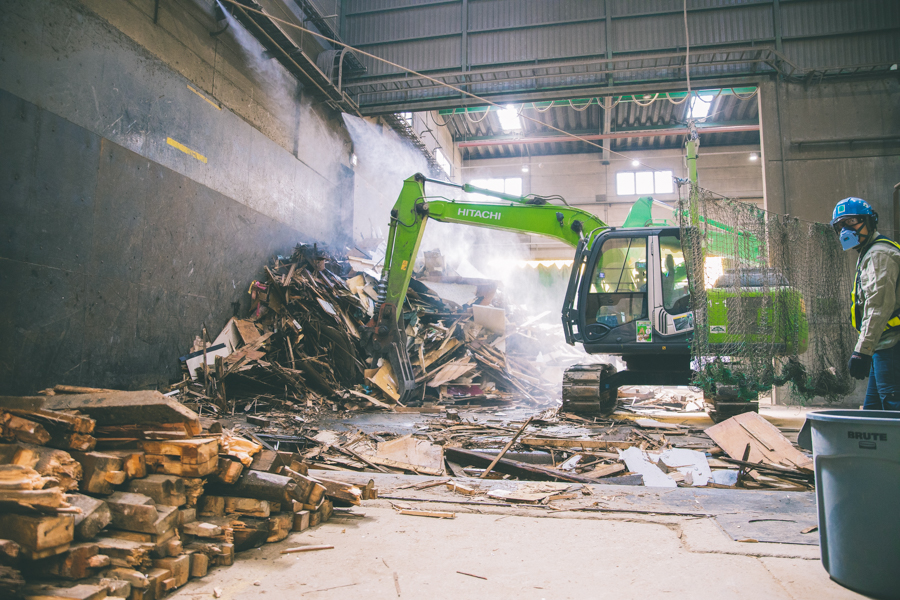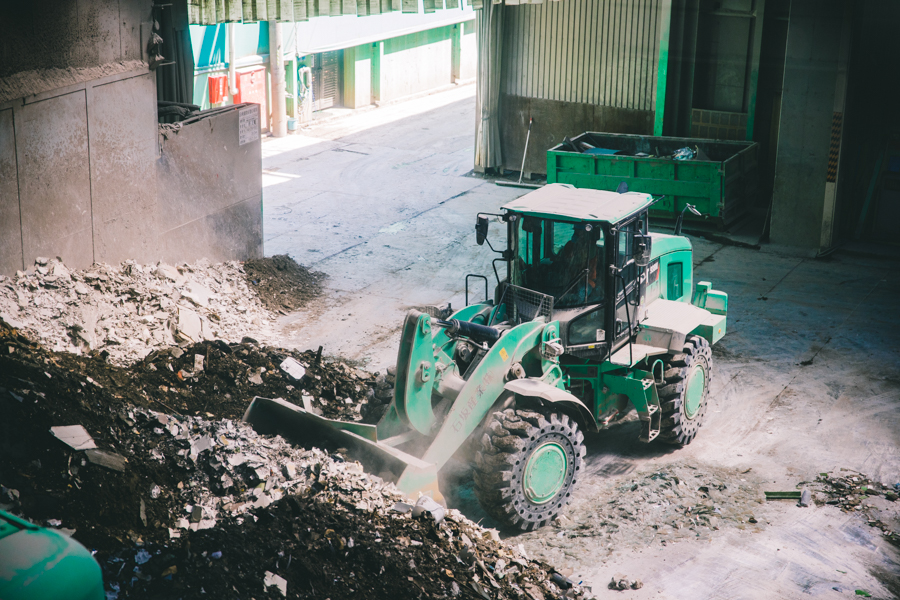Circular Manufacturing? Collaborate With Waste Management Companies – Noriko Ishizaka
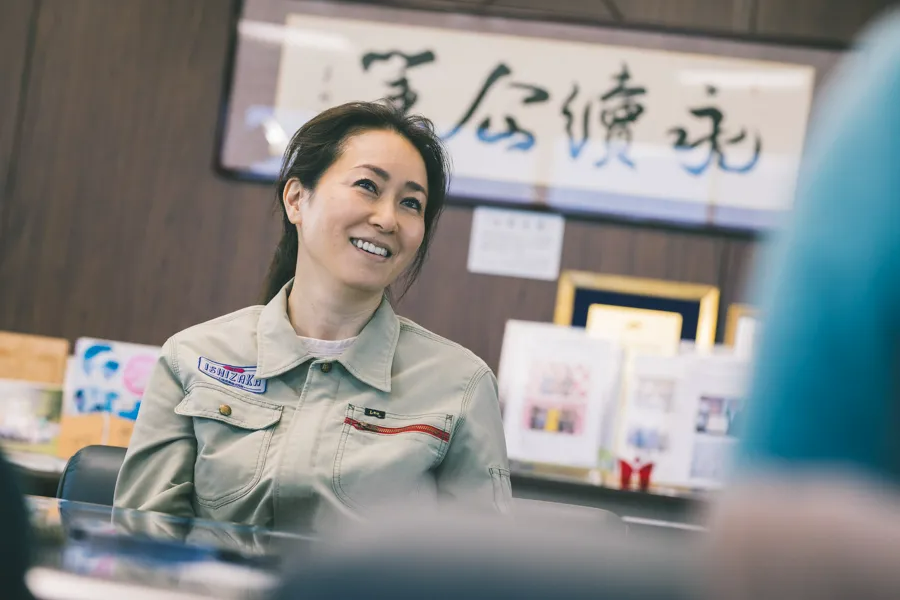
Ishizaka Sangyo Co., Ltd., an industrial waste plant that recycles industrial waste (resource recovery) is well known for having achieved an industry-leading 98% recycling rate.
In Part 1 of our interview, we discussed the reasons why Ishizaka Sangyo attracts 40,000 people a year on inspection tours with the company’s president Noriko Ishizaka. In Part 2, we will delve into detail on the future Ishizaka Sangyo has in its sights: one of innovation in which manufacturers combine forces with industrial waste companies.
Educating Manufacturers is a Mission for Waste Management Companies
WORK MILL:In an interview, you once said: “We are going to need to educate companies.” Can you tell us more about this?
Ishizaka: Instead of treating garbage as garbage, we need to get people to think of it as a resource that is connected to the future. In my opinion, from now on, it’s going to be important to consider all waste as a material to be recycled. This is because, it is at the manufacturing stage that the decision is made whether a product that goes out on the market will one day end up as garbage or be re-born as a resource. Manufacturing and industrial waste management cannot be thought about separately.
Of the 40,000 visitors we have at Ishizaka Sangyo each year from companies and organizations, a large proportion are actually from the manufacturing industry. Manufacturers are very much who we want to have understand, through learning about waste management, the importance of realizing a circular economy and a zero-waste society.
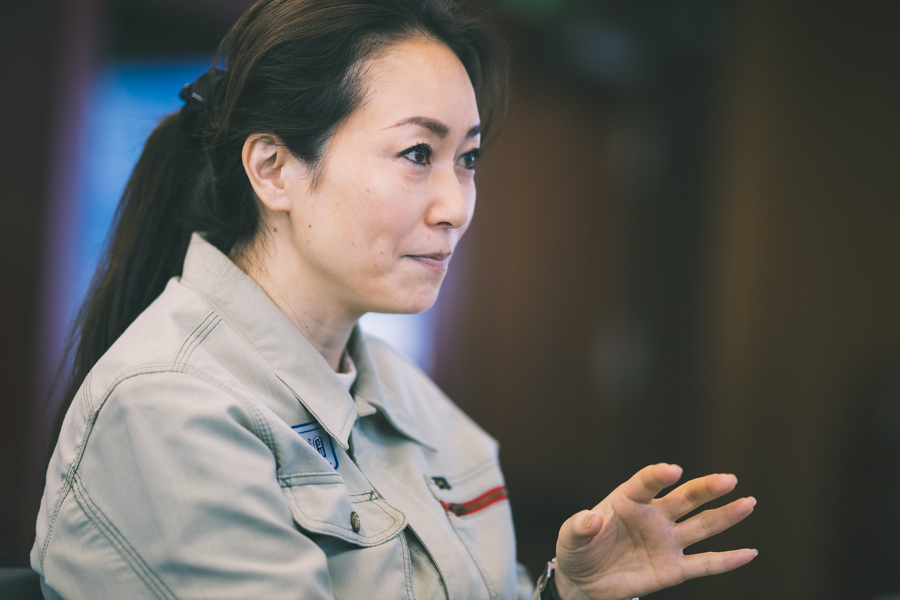
ーNoriko Ishizaka
Born in Tokyo, 1972. After graduating from high school in Japan, she studied at a university in the US for a short period of time. She joined Ishizaka Sangyo Co., Ltd., which was founded by her father, in 1992. Motivated by an incident of erroneous reporting about dioxin contamination of agricultural crops in the Tokorozawa area of Saitama Prefecture, she negotiated directly with her father saying, “I will be the person who changes the company,” and was appointed president in 2002.
Breaking away from our conventional mass-produced, mass-disposal linear economy and optimizing existing resources will help address climate change and environmental issues. It will also create new businesses and jobs.
WORK MILL:On the other hand, I think that mass-production, mass-disposal businesses are still the mainstream. What are your thoughts on this?
The Dilemma Faced by Businesses Built Around Mass-production and Mass-disposal
Ishizaka: Manufacturers are also in business, so, naturally, it’s not realistic for them to make products that will last forever.
Every company is busy thinking up ways to manufacture products that sell better or that get better rates of turnover.
However, I feel that having such products on the market results in people not respecting objects and creates “fast” values, whereby we throw things away once we tire of them. The fact is that this results in an ever-increasing amount of garbage.
WORK MILL:Do you have any specific stories you could tell us—something that left a strong impression on you?
Ishizaka: In the past, back in the days when Ishizaka Sangyo had an incinerator for burning garbage, we once had a huge amount of waste brought in, so much so that it blocked the passage in the plant. There were products that had been thrown away after Christmas events, there were top brand clothes that had been thrown away during the renewal of a new boutique, there were food items that were reaching their expiry dates. Quite ironically, a lot of the products that were brought in were made by big companies that everyone trusts.
We can’t ignore the problem of illegal dumping either. Not many people are aware, but the waste that is generated with the demolition of a house is extremely difficult to dispose of or recycle. Even in other countries, most of it is non-renewable and is buried in landfill. The easiest kind of waste to dump illegally is this stuff from houses.
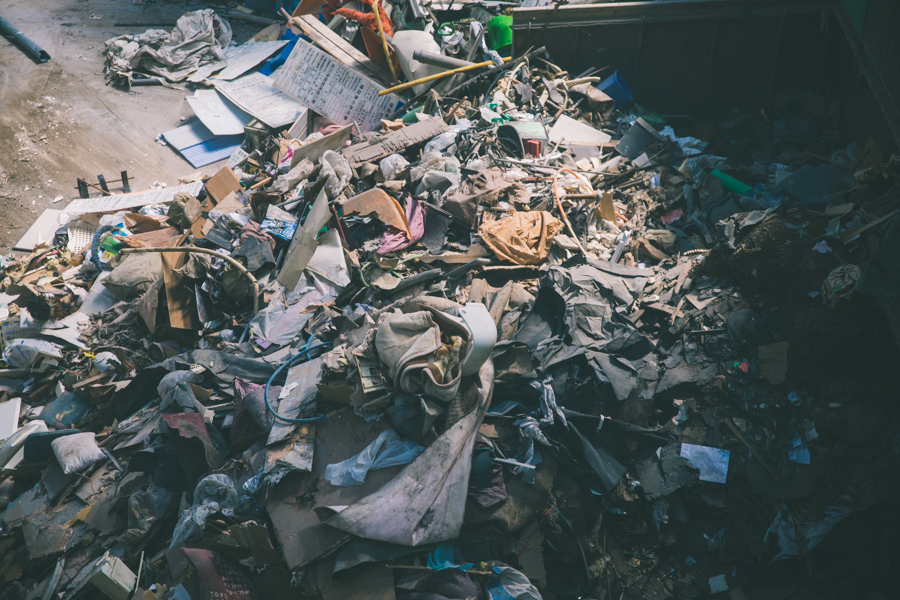
This does not imply a breach on the part of housing manufacturers. With products where there is such a long gap in time (about 50 years) between the sale of the product and its disposal, the people who bring the product into being and the ones who arrange for its departure from the world are not one and the same.
This being the case, you just don’t know which company it is that is going to demolish a house in the future. Of course, unlike other products, you cannot find a serial number on the waste materials that come from demolished houses, so you can just go and dump them in a forest somewhere and no one will be any the wiser. With costs for lawful disposal also being rather high, it’s no surprise that there are more than a few companies that do not dispose of such waste properly.
Increased Familiarity With SDGs Has Made It Easier for Ishizaka Sangyo’s Values to Be Conveyed to Society
WORK MILL:Side by side with this situation, we have the concept of SDGs more widely present in society these days and a lot more dynamism around the movement to get rid of plastic straws and shopping bags. What are your thoughts on trends like these?
Ishizaka: I think that SDGs represent a major transition point for society. I feel that we are in a new era, where the values that we have been trying to get across for decades are finally being accepted by society. ‘
We are no longer in an era where the only thing we need to think about is the making and selling of the product. Take the world of fashion, for example. These days,
something like an item of clothing having been made by people in developing countries working in appalling working conditions is big in the news. In other words, we are in now in an era where we think about the “invisible world.”
The same applies with sites of production and disposal. It’s time for consumers to look at these areas. This trend is particularly noticeable in the West. I think a new era is approaching where it’s the companies that are able to give consideration to these “invisible parts” that are going to be supported by consumers.
WORK MILL: Is there anything Ishizaka Sangyo is able to do as an industrial waste management company?
The solution for the coming era is for manufacturers and industrial waste disposal companies to work together
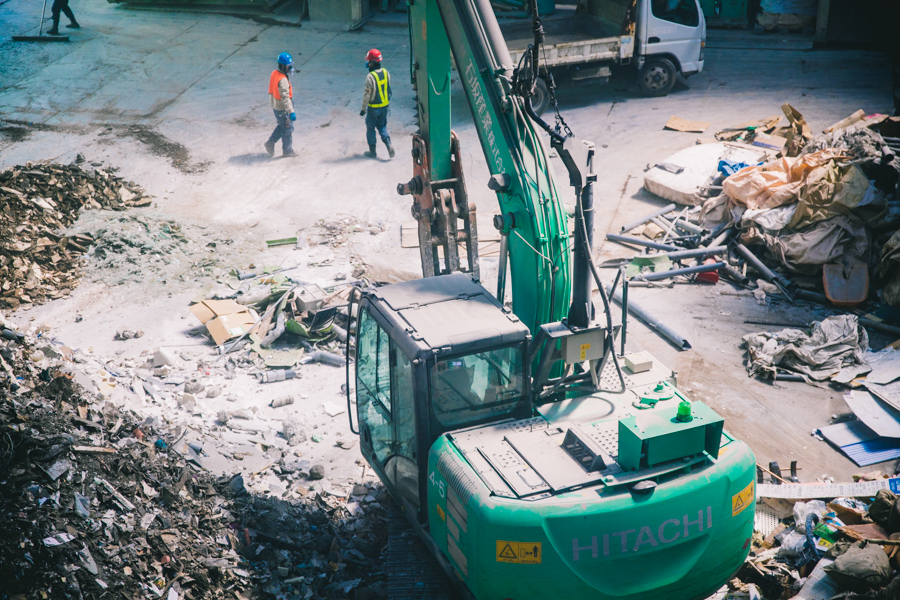
Ishizaka: For sure there is. As I mentioned before, the decision about whether a product will end up as garbage or will be able to be recycled as a resource is made at the time of production. That is precisely why it is necessary to think about manufacturing and disposal as a set, and why we want to collaborate with various companies, moving forward.
Manufacturing companies have the technology for production, and they also have a wealth of marketing know-how on the what and the how of selling so as to get customers on side. We, on the other hand, have the know-how on how products can be made so as to avoid both costs at disposal time and environmental impact.
This is why we want to be, from the manufacturing company’s point of view, a recycling partner for the purpose of circulating resources. Because we are the ones with the thorough knowhow on what’s easiest to recycle.
WORK MILL: If manufacturers and waste management companies come to work together, what would be the impact on consumption?
Ishizaka: Japanese consumers, in particular, prefer to buy new or “virgin” products. I suspect there are many who prefer new products over recycled ones.
When it comes to these values, I think that there are many messages created by manufacturing companies. But you can turn this around. It’s also the manufacturers who are in a position to create the exact opposite value: that’s it’s uncool to change over to a new version of the product all the time.
With the aim of creating these kinds of values, we are currently working with many companies and universities on turning the production process itself into a value. We want people to find value in this process, rather than in the finished product. We want things to work like this: people for whom the production process resonates then go on to buy those goods.
WORK MILL:Yes, it might just be that finding value in a single product is no longer appropriate for the times we live in. Because of the nature of these times, manufacturers and industrial waste companies are able to work together to create new values.
Ishizaka: In recent years, you often hear the term “digital transformation” in the business world. But we can expect there to be transformations other than the digital. I’m referring to the new values that we get when manufacturers and industrial waste companies combine forces.
We live in times that have changed dramatically, and manufacturers are also looking for a new path. Our desire is for companies like ours, who specialize in waste management, to be actively involved in this new era, and for us to work together on a new kind of manufacturing.
How To Survive as a Small To Medium-sized Business? Create Added Value Through Tie-UPS With Different Industries

Ishizaka: It’s not only manufacturing companies, but also waste management companies like Ishizaka Sangyo, who are feeling out alternative ways of being as a corporation in this new era.
Actually, Japan has about 20,000 waste management companies, but very few of them are growing rapidly, and the ones that are listed are basically only major companies that are entering different industries. In many cases, even the mainstay companies have annual sales of about 1 billion yen, and I imagine that there are many companies that are feeling out the direction they should go in so as to survive in the future.
WORK MILL:What choices do these companies make as survival strategies?
Ishizaka: I often hear about companies moving forward by buying out peer companies and complementing their weaknesses—in other words, mergers and acquisitions. But this is not a path available to every company, right? So, this is why I think it’s important for companies to create new value through tie-ups with completely different industries, as I mentioned before.
WORK MILL:This is an idea that can likely be applied in other industries too, not only to waste management companies.
Ishizaka: For sure there is. That’s because collaborating with a completely different industry will allow us to make use of the know-how and technology that we have accumulated so far. As a stand-alone, you might not be able to create high value, but if you team up with a completely different industry, the creation of significant added value becomes possible.
If we were to partner with the housing industry, an industry in which waste disposal is costly and laborious, we’d be able to propose new concepts for homes, kinds that have never existed before. If we were to partner up with medical manufacturers to recycle resources, we might be able to bring about changes in medical care.
From an Era When Creating Was a Value to an Era Where Finding Is a Value
WORK MILL: It seems that you are collaborating with various companies at the moment, but what about Ishizaka Sangyo’s goals for the future?
Ishizaka: All heavy machinery in our plant is powered by electricity, not gasoline. For the time being, we are using power supplied by an electric power company, but because there are limits to the energy found underground, if we are to live sustainably on this planet, I think that we need to switch over to alternative energy sources that will not run out.
WORK MILL: Concretely speaking, how would you switch to alternative energy?
Ishizaka: In fact, We are researching energy generation right now. Specifically, we’re looking not only at solar power, but also at integrated wind and solar power generation. We are installing air conditioning systems using geothermal heat and are converting into usable energy such as wind exhaust and vibration, which are produced by the machinery in the plant, but would otherwise be lost as energy sources. Looking to the future, we would also like to play a role as an energy supply company.
The era we have been in until now is one that places value on creating. But in the coming age, I’m sensing that genuine value creation will be in finding value in things that were thought to be worthless.
Ishizaka Sangyo will continue to take on challenges as a partner in building such a society together.

Updated: June 30th, 2020
Date of interview: April 2020
Words: Masato Takahashi
Photos: Kensuke Oki




